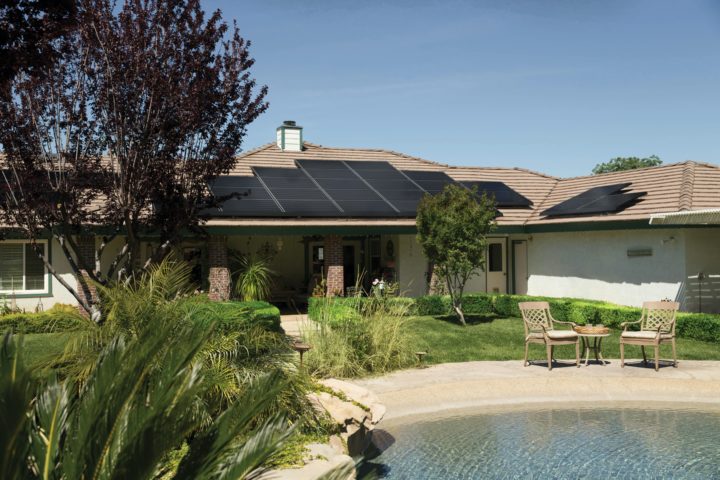The following contribution is from another author.
The energy crisis of the 1970s coincided with a growing awareness of our detrimental impact on the environment. Together, these two phenomena inspired movements focused on using less energy and minimizing sources of pollution. Part of that response came from architects who devised ways to make houses more environmentally sound—giving birth to the passive home movement.
What Is A Passive Home?
The first Passive Houses had features like solar-gain windows that used the sun’s energy as a source of heat, vastly improved insulation techniques and materials, recovery systems for hot water and heated air and methods of testing the air-tightness of a house, allowing engineers to identify opportunities for improved design choices.
The principles developed from these advances continue to inform construction efforts. While most passive homes are new builds with super-efficient design elements, there are many ways that you can renovate existing structures to reduce their environmental impact. For instance, improving a home’s efficiency leads to decreased energy consumption and less pollution from power plants.
Here are five simple and effective passive home principles you can adopt which will save you money—and may ultimately contribute to saving the planet.
1. Optimize Your Heating and Cooling
Chances are, you can squeeze a lot more efficiency out of your home’s existing heating and cooling systems. There are many viable options to accomplish this and more than just one solution will work. Research the range of choices available to you that will work with elements of the system you currently have in place.
Older model gas or oil-burning furnaces offer efficiency ratings of only about 80 percent on average, which leaves a lot of room for improvement. Bear in mind it’s not always about the numbers and the most efficient heat source available may not be the right option for you if it doesn’t mesh well with the existing systems in place or would require extensive renovation to be viable.
Even if you opt to replace the central components, you’ll likely be able to keep the ductwork. There’s more than one way to minimize your ecological impact and reusing or refurbishing existing materials is a fine contribution to that goal.
2. Harness the Power of the Sun
Solar heating principles also apply to the first item on our list, but that isn’t the only way solar energy solutions can benefit you—and the environment. Passive solar techniques like converting a room in an appropriate location to a solarium can provide heat as well as pleasant living space. Solariums are generally designed with large glass panels that allow natural sunlight to flood the space, effectively capturing and retaining warmth during cooler months. It might seem counter-intuitive, but the sun can also help cool your home’s interior. And during the summer, proper ventilation and strategically placed shades can keep your solarium comfortable, providing an enjoyable space year-round while reducing your reliance on artificial heating and cooling systems. Hence, if interested, you could consider researching for providers of solariums by searching up phrases like Solariums near me in Ottawa , ON or something similar.
Additionally, skylights placed in strategic places can, when opened, allow rising warm air to escape from your home. The movement of this heated air creates a draft that pulls cooler air in from ventilation sources such as open windows or screen doors in lower or shady locations of your home.
3. Go Green—Literally
If you opt to include a sunroom in your passive house plans, you can fill it with light-loving houseplants, which bring the added benefit of cleaning your interior air and providing oxygen enrichment. A single indoor plant can produce as much as 27 liters of pure oxygen each month while scrubbing pollutants like volatile organic compounds or carcinogenic chemicals that gas out from synthetic materials in upholstery and flooring.
4. Get Technical
There are many ways to increase the energy efficiency of your home. Advances in smart home technology provide us with greater control over heating and cooling, whole-house monitoring that can alert us to open doors and windows that allow climate-controlled air to escape, and the ability to identify and power down appliances that are consuming significant amounts of energy when not in use.
Even things like precise control over lighting, which enables us to minimize the energy wasted on illuminating empty rooms or automatically switch lights off during daylight hours bring a lot of benefits. While all this new tech may sound great, it isn’t without its downsides and it’s good to be aware of some of the potential hazards that internet-connected smart home technology can bring with it.
5. Avoid Unnecessary Repairs
Something you can do for the environment is to keep parts of your old, inefficient house exactly the same. Materials used in home repair cost energy to produce and the new products require transportation—a significant source of pollution. Avoiding the need for these materials saves the environment from these costs and saves you time and effort. One of the easiest ways to guard against costly repairs is to minimize the risk of water damage.
As many homeowners can tell you, if there’s a crack or hole anywhere in the exterior walls of a house, water will find it. Water leaking from plumbing or seeping into a house from outside not only damages materials that will need to be replaced but can cause mold which will then have to be removed. Check for signs of water intrusion in exterior-facing corners, along the baseboards of exterior walls and behind any appliances and build-ins like dishwashers or washing machines.
One of the most common sources of water damage is overrun from gutters, especially the types used in older construction. These gutters are prone to clog with fallen leaves, which causes water to back up and leak into the walls of a house, but a leaf guard for gutters will prevent this. Gutter covers are a simple, cost-effective solution. Also sometimes called gutter guards, these devices vary in design and cost but are effective and easy to install.
Active Efforts, Passive Solutions
Though it would be difficult to match the efficiency of a newly built passive home, there are still plenty of ways you can make a meaningful difference. Not all fixes entail a massive renovation project. Simply being aware of the way you use energy at home can help our planet—and your wallet—stay green.
















